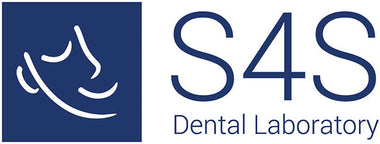MIGRAINE AWARENESS WEEK: BRUXISM
Founded by the Migraine trust, Migraine Awareness Week is a great way to kickstart conversations, run health promotion activities and reflect on how we can support those suffering with migraines and headaches.
Migraines are more than just a pain in the head, affecting every aspect of the sufferer’s life from their career to their relationships - making the day-to-day unbearable.
It’s estimated that the UK population misses a total of 25 million work and education days due to migraines - with 71% of sufferers claiming that their migraines have a significant impact on their mental health too. With stats like these, it’s clear that this condition requires a far greater level of awareness, understanding and attention than it’s currently given.
With the lack of awareness comes a lot of misdiagnosis, with many sufferers assuming that their migraines are something that they’ll just have to live with. But what many don’t realise is that these headaches could be symptom of a very common, yet treatable, condition: Bruxism.
Bruxism
Bruxism is defined as the habitual grinding and clenching of the teeth, typically occurring during sleep and affecting over 80% of the population at some point in their life. Despite being very common and worryingly on the rise, Bruxism often remains overlooked and undiagnosed.
For some the symptoms are minimal, but for others the side effects are painful and persistent- including:
- Migraines and headaches
- Broken teeth
- Stiff neck & jaw
- Poor sleep quality
- Tooth wear
One of the most debilitating symptoms of Bruxism is the headaches, migraines and the chronic tensions headaches. Many sufferers turn to their GP to seek help, undergoing MRIs and brain scans- but what they don’t realise is that their headaches can actually be caused by their night-time teeth grinding!
The Science Behind it
Typically occurring during sleep, the sufferer’s face muscles cause their teeth to grind and clench. This constant muscle movement overwhelms the Trigeminal Nerve System with signals, compromising the system and leading to disruptions in the network, ultimately causing the noxious stimulus to surround the brain in fluid. The build up of this fluid is the cause of the very intense headaches and intense migraines that many patients suffer with.
Treatment
Ultimately, you want to limit the amount of noxious sensory input to limit the migraine triggers to the Trigeminal Nerve System. In order to restrict this, we have to reduce the intensity of the tooth grinding and clenching, thereby reducing the amount of signals being sent back to the Trigeminal Nerve System. There are many ways to treat bruxism, including the use of a dental appliance called an Occlusal Splint. The SCi (Sleep Clench Inhibitor) is one of the occlusal splints available for the treatment of bruxism.
SCi: How does it Work?
The SCi reduces parafunctional intensity of the temporalis, masseters and the later pterygoids (the little muscles situated on your jaw joint), eliminating posterior and canine contact - thereby reducing temporalis clenching.
The SCi can be used for the prevention of symptoms associated with Bruxism, the treatment of certain types of TMD, the prevention of occlusal trauma, protection of restorations and implants in cases of severe Bruxism, and the prevention and treatment of chronic tension and type headache and migraine pain.
The SCi has many advantages including:
- Excellent clinical results.
- Extreme simplicity, and quickness, taking only 20 minutes to fit.
- Excellent patient acceptance and compliance.
- Scientifically proven efficacy.
